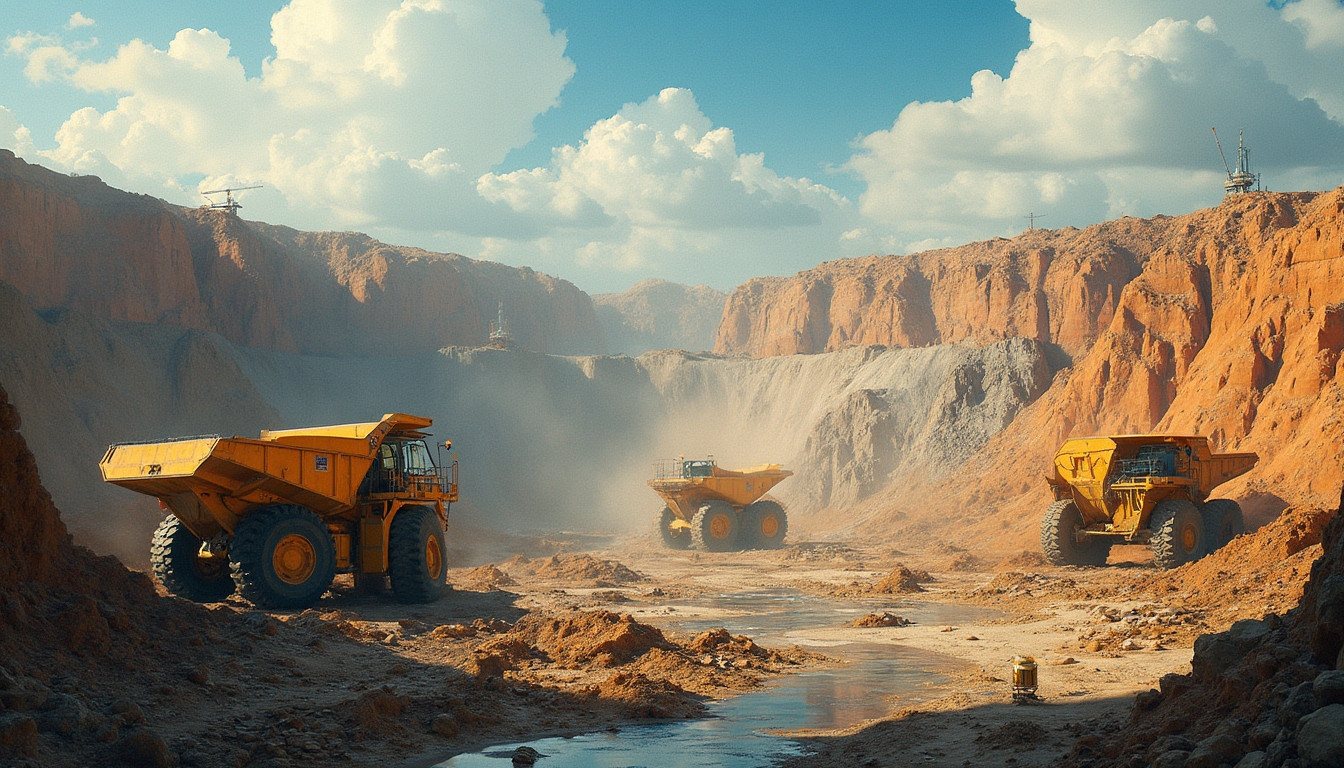Introduction
The Ore Deposits 101 series provides a detailed ore deposits understanding, covering formations, classifications, and their economic significance. The series consists of 11 talks, addressing Earth's structure, crustal abundance of metals, and economic thresholds essential for metal extraction. It encompasses plate tectonics, melting and metal concentration processes, and various hydrothermal ore deposits classifications. Specific deposit types are discussed, concluding with insights into natural concentration mechanisms and essential processes in ore formation.
Fundamentals of Ore Deposit Formation
Earth's Structure and Composition
The Earth is divided into the core, mantle, and crust. The crust, being the outermost layer, is predominantly where ore deposits are located. Human access to the Earth's interior is limited, making direct study challenging. Nevertheless, processes such as plate tectonics and magma movement provide vital clues about deeper compositions and dynamics.
Crustal Abundance of Metals
Metals in the Earth's crust occur in varying concentrations. For instance, iron is widespread but typically needs concentration processes to become economically viable. This necessity for concentration is fulfilled through magmatic and hydrothermal processes, essential for boosting metal content to mineable levels.
Economic Thresholds for Metal Extraction
The economic viability of ore extraction hinges on ore reserves and the concentration of commodities within the ore, known as ore grade. High-grade deposits could be uneconomical if reserves are low or extraction costs soar. Understanding the economic viability of metal extraction is crucial for miners and investors alike.
Plate Tectonics and Ore Formation
Basic Principles of Plate Tectonics
Plate tectonics involves the movement of large plates within the Earth's lithosphere. This movement can result in subduction zones, where one plate is thrust beneath another. These zones, among other mechanisms like crustal thickening and magma injection, play a pivotal role in ore deposit formation.
Subduction Zones and the Ring of Fire
Subduction zones, particularly those around the Ring of Fire, are often linked with volcanic activity and the formation of hydrothermal ore deposits. These geological activities greatly contribute to deposit formation processes, notably altering the mineral composition in such regions.
Other Mechanisms for Rock Melting
Crustal thickening can be induced by tectonic forces, resulting in rock melting and magma formation. Magma injection, involving molten rock movement from deeper layers, leads to various ore deposit formations, particularly in volcanic regions.
Melting and Metal Concentration Processes
Partial Melting
Partial melting, where a portion of the Earth's crust liquefies, generates magma that transports metals upwards. This is vital for concentrating metals in specific locales, eventually leading to the creation of ore deposits.
Magma Rise Through the Crust
Magma rises through the Earth's crust by buoyancy, carrying metals and forming different ore deposits based on depth and environmental conditions.
Magma Chamber Formation and Cooling
Magma chambers, large subsurface molten rock reservoirs, cool and crystallise, forming distinct layers and concentrating metals in select areas. This process is integral to the development of significant ore deposits.
Volatile Separation and Crystal Fractionation
During cooling, volatile compounds like water vapor separate, aiding in metal concentration. This separation, paired with crystal fractionation, leads to economically viable ore deposits.
Classification of Hydrothermal Ore Deposits
Deep Crustal Deposits (10-50 km)
Deep crustal hydrothermal deposits form at substantial depths, usually linked with subduction zones. These might include copper and gold deposits originating through multifaceted hydrothermal processes.
Mesothermal Deposits (1-10 km)
Mesothermal deposits develop at moderate depths, frequently associated with regional metamorphism. These deposits usually contain gold and copper, forming through hot fluid interactions with rocks.
Epithermal Deposits (<1 km)
Epithermal deposits materialise at shallow depths, often accompanying volcanic activities. Typically rich in gold and silver, these deposits arise from hot fluid-rock interactions close to the surface.
Surface Deposits
Surface deposits, such as placer deposits, emerge when primary deposits erode and concentrate metals in sediments, generally mined through surface techniques.
Specific Ore Deposit Types
Mafic and Ultramafic Intrusions
These igneous rocks can host considerable metal deposits like nickel and copper, forming through magma cooling and solidification processes.
Porphyry Deposits
Porphyry deposits, rich in copper, are created through magma interaction with the Earth's crust. Often observed in proximity to volcanic activity, these deposits are expansive and valuable.
Mesothermal Vein Deposits
These gold-rich deposits form through heated fluid-rock interactions at moderate depths, usually tied to regional metamorphism.
Epithermal Deposits
Gold and silver-rich, these deposits form via surface-close hot fluid-rock interactions, generally linked with volcanic activities. The Cadia Ridgeway Gold-Copper Deposit exemplifies such formations.
Volcanic-Hosted Massive Sulfide (VHMS) Deposits
VHMS deposits are copper-rich, formed through seawater-hot rock interactions near ocean floors, commonly seen with volcanic activity.
Placer and Secondary Deposits
Formed as primary deposits erode, placer deposits collect metals in sediments, mined using surface methods, often revealing significant gold, platinum, and other metal reserves.
Conclusion
Natural processes like magmatic and hydrothermal actions are essential for boosting metal concentrations to economically mineable levels. These involve molten rock and heated fluid movements through the crust, concentrating metals uniquely.
The "melt, rise, and cool" procedure is integral to ore formation. Magma ascends, carrying metals, and cools to separate into layers, concentrating minerals. Many major ore deposits form through this method.
Upcoming discussions focus on specific ore deposit types, their formation methods, economic significance, and exploration strategies. This information will prove valuable for anyone investing in mining stocks and offer further comprehension of ore deposit complexities.
Key Takeaways
Crustal Abundance vs. Economic Viability
Whilst metals exist in the Earth's crust, they are often found in low quantities, requiring processes to augment their presence to workable levels.
Role of Partial Melting and Magma Cooling in Metal Concentration
Partial melting and subsequent magma cooling play central roles in concentrating metals. The molten material ascends, carrying metals, which then solidify in clearly defined layers.
Variations in Deposit Types Based on Depth and Environment
Deposits vary considerably with depth and environmental factors. Complex hydrothermal procedures create deeper deposits, while epithermal processes form closer to the surface. Recognising these distinctions is vital for effective exploration and extraction techniques.
Are You Ready to Capitalize on Major Ore Discoveries?
Enhance your investment strategy with Discovery Alert's cutting-edge real-time notifications on significant mineral discoveries. Designed for both new and seasoned investors, our AI-powered alerts make navigating the complex world of mineral exploration easy. Embark on a 30-day free trial and tap into the wealth of opportunities today. Discover more with Discovery Alert.



